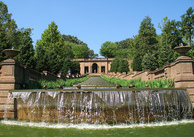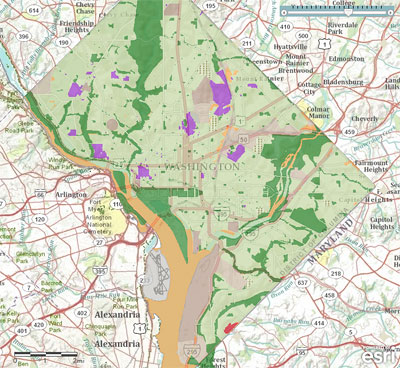DC’s parks are 5th best in the nation, says “Park Score”

Photo by Mr. T in DC on Flickr.
DC is 4th on Transit Score, 6th on Bike Score (and 4th to Bicycling Magazine), 7th on Walk Score, 6th worst in traffic, and 2nd in tech job growth. The parks folks have decided to get into the headline-grabbing rankings business (successfully) with a new “Park Score,” and DC comes in 5th.
The Trust for Public Land ranked the 40 largest US cities on 5 metrics: the amount of parkland in the city, media park size, the percentage of residents within ½ mile of a park, park spending per capita, and the quantity of playgrounds by population.
DC placed 5th, after San Francisco, Sacramento, New York, and Boston. The 5 worst cities are Indianapolis, Mesa, Louisville, Charlotte, and Fresno. Virginia Beach was #7, Baltimore #15.
Here is the full spreadsheet of data (XLS). We mainly lose points on average park size, where our median of 0.7 acres is the smallest among the cities due to the many small federal circles, squares and triangles. 96% of residents live within ½ mile of at least one park, putting DC near the top on that metric, but for many that park is just a small federal square or triangle without many amenities.
DC also ranks low in playgrounds, with only 1.68 per 10,000 residents, which comes out to about 100 playgrounds. Downtown residents have been asking for a playground, and other neighborhoods could benefit from them as well.
Meanwhile, we score near the top on the other metrics. 19.1% of DC’s land area is parkland, second only to San Diego and New York. This ranking unfortunately includes things like parkways and, in DC, the parking lots around RFK stadium. But that still doesn’t diminish our robust amount of actual parkland, most in the large federal spaces like the Mall, Rock Creek, the Arboretum, the Anacostia and Potomac waterfronts, the Fort Circle, and more.
DC spends and the federal government spend $303.45 per capita on parks, the most of any city thanks to the Mall’s role as a major national tourist destination.
In the press release, Peter Harnik, director of The Trust for Public Land’s Center for City Park Excellence, notes that residents in Wards 1 and 5 especially need better park access, and there are not enough sports playing fields.

